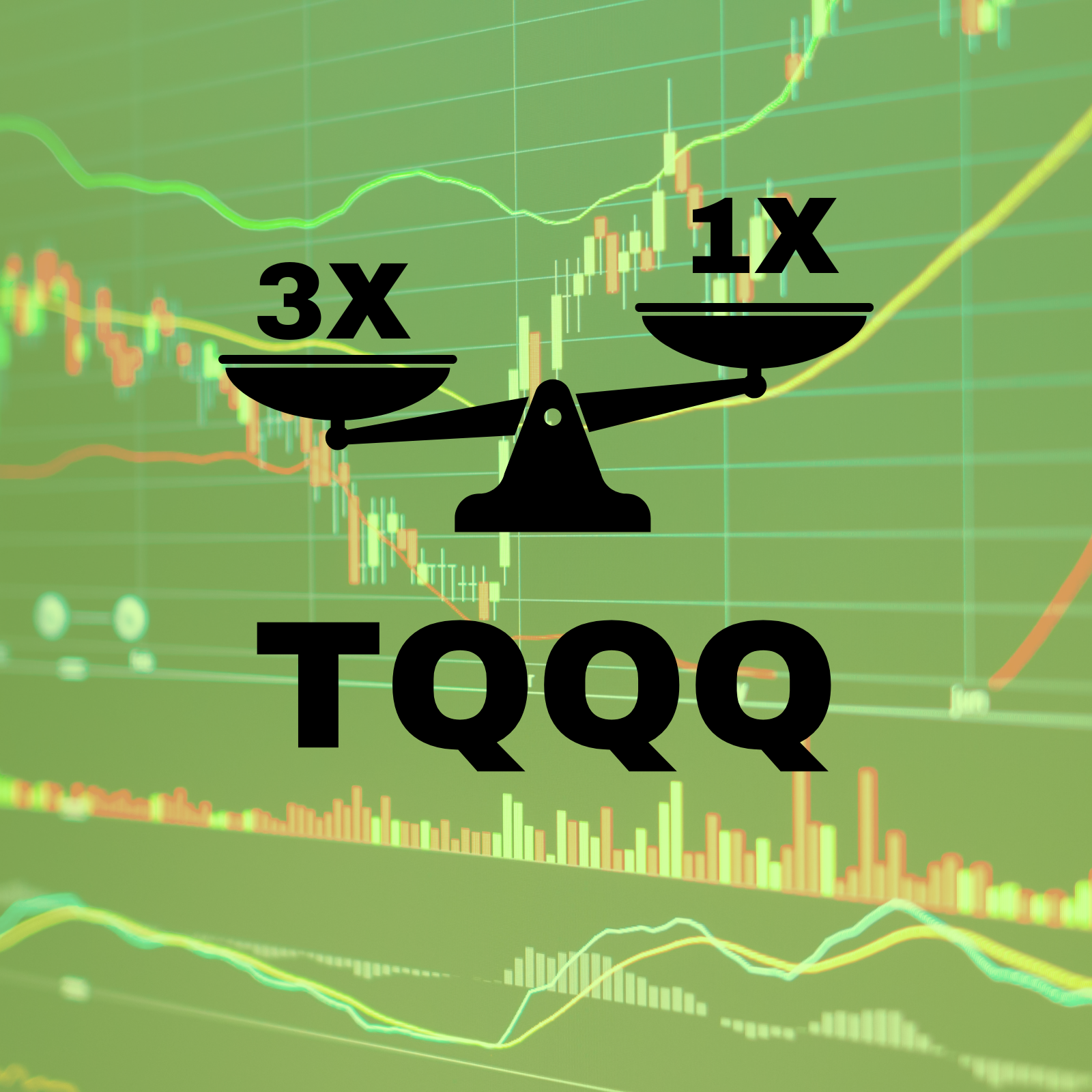Understanding Triple Leverage: The Power and the Pitfalls

Many traders seek higher returns, but not everyone understands the tools that can amplify gains—or losses. Triple-leveraged ETFs, like TQQQ, provide exposure to 300% of the Nasdaq 100’s daily performance. At Hawkeye Alerts, we use TQQQ to take advantage of short-term opportunities, aiming to maximize returns while managing risk.
One of the key benefits of trading with leverage is flexibility. While there are times when we use 100% of our capital, there are also many periods where our system signals caution, leaving a portion of funds in cash. This cash isn’t just sitting idle—it earns interest, provides liquidity, and acts as a safeguard during uncertain market conditions. However, while triple leverage can be a powerful tool, it also comes with risks that long-term investors must understand.
Why Use Triple Leverage?
Triple-leveraged ETFs amplify daily market movements. If the Nasdaq 100 gains 1%, TQQQ aims to return 3%. This can lead to massive gains in strong uptrends, making it an attractive tool for traders looking to capitalize on momentum.
One major advantage of using TQQQ is that it allows traders to achieve high exposure without borrowing on margin. Traditional margin accounts come with interest costs and margin calls, which can force traders to exit positions at the worst times. With TQQQ, we get that leverage built into the ETF itself—without those added risks.
Additionally, when our algorithms indicate a cautious stance, we may keep a portion of our funds in cash. This approach offers two benefits:
- Cash earns interest – Some high-yield accounts currently pay 4.5% or more, meaning uninvested funds still generate returns.
- Liquidity for flexibility – If market conditions shift or an emergency arises, having cash available allows for quick action without needing to sell at a loss.
Another key benefit of leveraging ETFs like TQQQ is the ability to compound gains more efficiently. By actively managing positions and reinvesting profits, traders can harness the power of compounding to grow their portfolios faster. If you’re unfamiliar with how compounding works and why it’s essential for long-term wealth building, check out our recent blog post here: The Power of Compounding.
However, while leverage can boost returns, it also magnifies risks. That’s why it’s critical to understand the downsides before holding leveraged ETFs for the long run.
The Hidden Risks of Holding Triple-Leveraged ETFs Too Long
Despite their potential for rapid gains, triple-leveraged ETFs like TQQQ are not designed for long-term holding. Many investors assume that if the Nasdaq rises over time, TQQQ will follow. But due to the mechanics of leverage, holding through major downturns can be devastating.
For example, an investor who bought TQQQ at its 2021 highs had to wait over three years just to break even. The reason? Large drawdowns require exponentially larger recoveries.
- If TQQQ drops 80%, it doesn’t need to rise 80% to recover—it must climb 400% just to return to its original price.
- If TQQQ drops 90%, it needs to gain 900% to break even.
This is why blindly holding triple-leveraged ETFs through downturns is dangerous. The deeper the loss, the harder it is to recover. Even in a strong market rebound, recovering from extreme losses takes far more upside than most traders anticipate.
The Impact of Decay on Triple-Leveraged ETFs
Another hidden risk of triple-leveraged ETFs like TQQQ is decay. Unlike regular stocks or standard ETFs, leveraged ETFs reset daily, meaning their performance compounds in ways that can hurt long-term holders.
Here’s how it works:
- If the Nasdaq drops 3% one day and rises 3% the next, it’s still slightly below where it started.
- But with TQQQ, because it’s leveraged 3x, those small daily losses compound over time—leading to erosion of value, even in choppy, sideways markets.
This daily reset effect means that even if the Nasdaq moves sideways over time, TQQQ can still decline in value. The more volatile the market, the worse the decay becomes. This is why holding triple-leveraged ETFs for extended periods can be risky, especially in markets that lack a strong, sustained trend.
How Hawkeye Alerts Navigates These Risks
At Hawkeye Alerts, we don’t blindly hold TQQQ. Instead, we rely on proven algorithms that track market trends, aiming to enter at optimal times and avoid unnecessary losses.
This past week was a perfect example. We exited the market on January 24, right before a major sell-off. Instead of forcing trades in uncertain conditions, our system kept us in cash while TQQQ dropped -4.24%. This strategic approach allows us to capture gains without exposing our members to unnecessary risk.
By using leverage responsibly and staying adaptable, we can take advantage of opportunities when they arise—while avoiding the common pitfalls that trap long-term leveraged ETF holders.
Final Thoughts
Triple-leveraged ETFs like TQQQ can be an incredible tool, but they require a disciplined strategy. While they offer the potential for high returns, they also come with increased volatility, deep drawdowns, and the risk of decay.
At Hawkeye Alerts, we use leverage when it makes sense, staying flexible and protecting capital when conditions turn unfavorable. If you're looking for a smarter way to trade TQQQ without the risks of holding long-term, join us and see how our system works.






